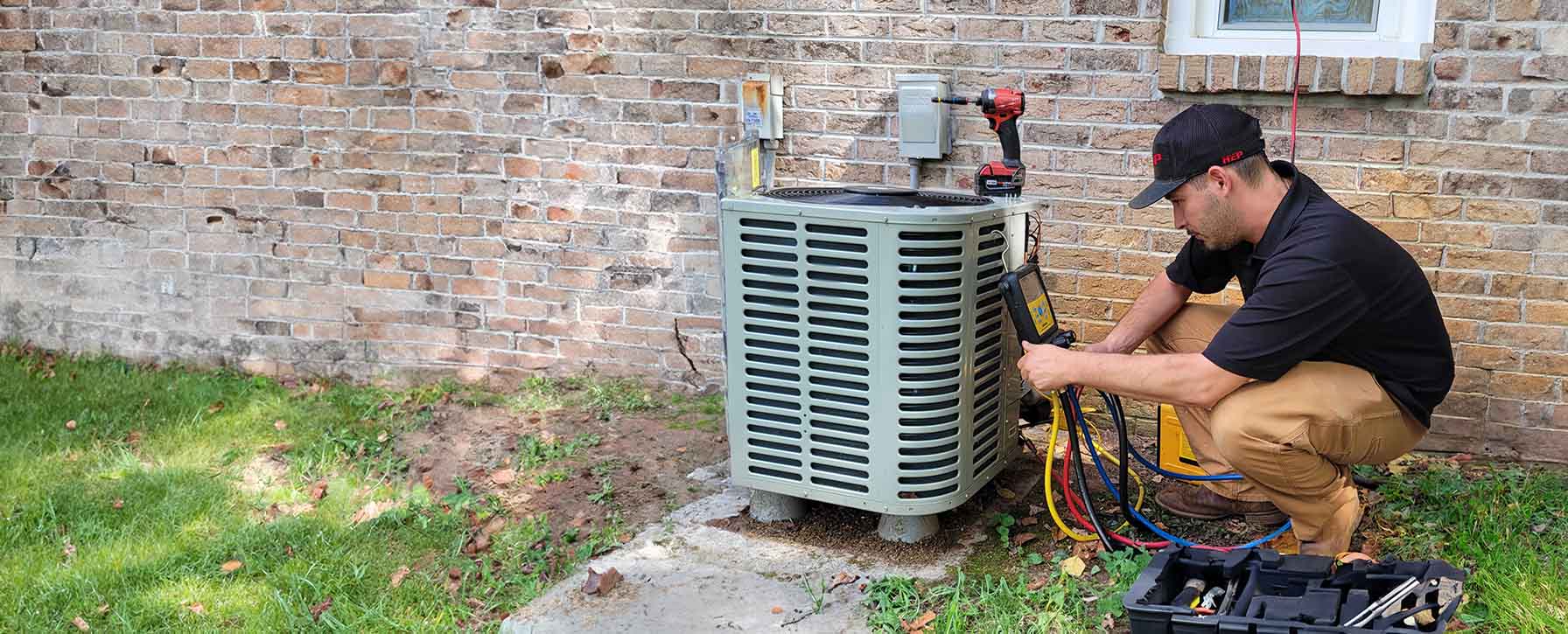

Environmental Footprint
Your trusted partner for professional home services. Quality workmanship, guaranteed satisfaction.




- HEP
- Environmental Footprint
Environmental Footprint | Thermostat Upgrades | Heating and Air Conditioning | Cosby
Imagine enjoying perfect indoor comfort in Cosby while trimming your utility bills and shrinking your carbon footprint at the same time. HEP’s experts make it effortless with thermostat upgrades that learn your schedule, fine-tune temperatures by the degree, and keep your HVAC system running only when it’s truly needed. Fewer run-cycles mean less energy wasted, less strain on your equipment, and a healthier planet to explore once you step outside the door.
From quick, tidy installation to friendly walkthroughs of every smart feature, we handle the details so you can just tap, swipe, and save. Join neighbors across Cosby who have already discovered that thermostat upgrades are the simplest way to boost comfort, add value to their homes, and take a meaningful step toward a greener future—one precise temperature setting at a time.
FAQs
How can upgrading my thermostat reduce my home’s environmental footprint in Cosby?
A modern programmable or smart thermostat lets your HVAC system run only when it is truly needed. By automatically lowering the temperature in winter or raising it in summer while you are asleep or away, you can shrink heating and cooling run-times by 10-30 %. Less runtime means less electricity consumption, lower fossil-fuel use at the power plant, and a direct reduction in the greenhouse gases tied to your household. Many smart models also provide energy-use reports, helping you fine-tune settings for even greater environmental gains.
What kinds of thermostats work best for Cosby’s four-season climate?
Cosby experiences humid summers and cool winters, so choose a thermostat that: • Supports both conventional furnaces and heat pumps. • Offers humidity monitoring to prevent muggy indoor air in July and August. • Includes learning algorithms or occupancy sensors to adjust setpoints automatically when no one is home. • Provides outdoor weather tracking so the system anticipates temperature swings common in the Smokies. Popular options include Energy Star–certified smart thermostats from Ecobee, Honeywell T-series, and Nest Learning Thermostats.
Will a programmable or smart thermostat really lower my utility bills, and by how much?
Yes. According to the U.S. Department of Energy, you can save about 1 % on your heating bill for every degree you turn the thermostat back over an eight-hour period. Homeowners in East Tennessee who set 7-8 °F setbacks typically see overall HVAC energy savings of 8-15 % per year. Smart thermostats that adapt to your schedule or use geofencing often exceed those numbers because they prevent accidental overheating or over-cooling.
Can I install a smart thermostat myself, or should I hire a professional?
Many Wi-Fi thermostats market themselves as DIY-friendly, but several factors argue for professional installation: • Wiring: Most smart units need a common (C) wire for constant power; older Cosby homes may not have one. • System type: Heat pumps, dual-fuel setups, and multi-stage equipment require correct dip-switch or app configuration to avoid efficiency losses. • Warranty: Some manufacturers void coverage if a licensed HVAC technician does not perform the install. If you are comfortable turning off the breaker and identifying low-voltage wires, you can attempt it; otherwise, professional installation is quick and inexpensive.
Are there any rebates or incentives in Cosby for upgrading to an energy-efficient thermostat?
Yes. Tennessee Valley Authority (TVA) partners with local utilities such as Sevier County Electric System (SCES) to offer Home Uplift and EnergyRight programs that rebate $50–$100 on qualifying smart thermostats. Federal tax credits under the Inflation Reduction Act also allow you to claim 30 % of the cost (up to $150) for installing an Energy Star–certified unit. Our team can supply the necessary documentation and help you file the paperwork.
How will a new thermostat integrate with my existing HVAC system?
Modern thermostats are designed to be backwards-compatible with most 24-volt gas furnaces, heat pumps, and air conditioners dating back to the 1990s. During installation we: 1. Verify voltage and wiring compatibility. 2. Check whether a common wire is present or supply a power extender kit. 3. Configure equipment settings (heat pump vs. conventional, number of stages, auxiliary heat lockout, etc.). 4. Test heating, cooling, and fan modes to ensure seamless operation. If your system is older or has proprietary controls, we can recommend adapter modules or suggest cost-effective HVAC upgrades that maximize efficiency and minimize your environmental impact.